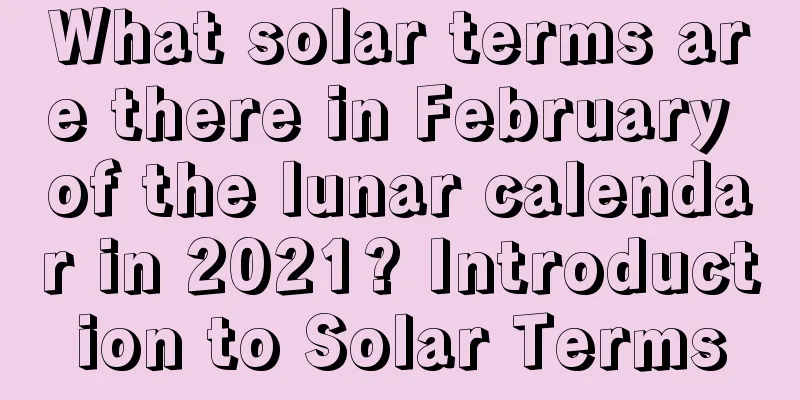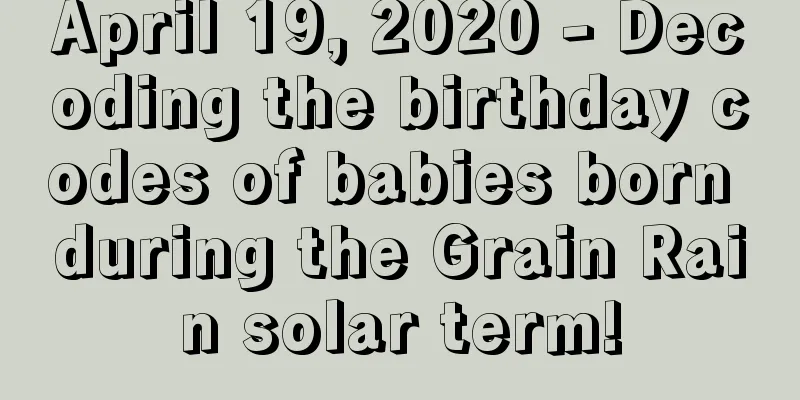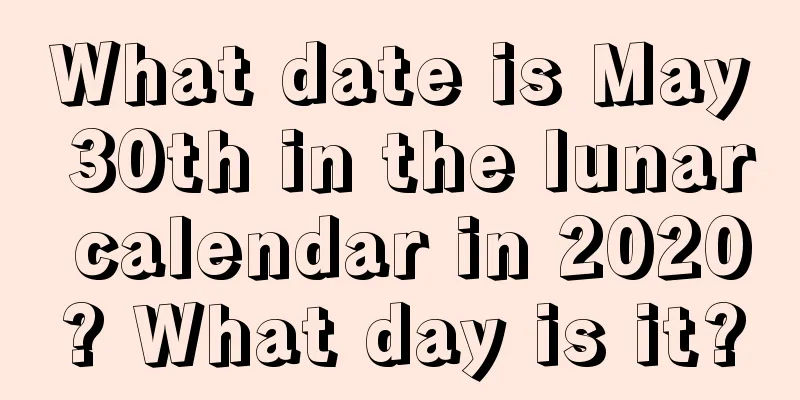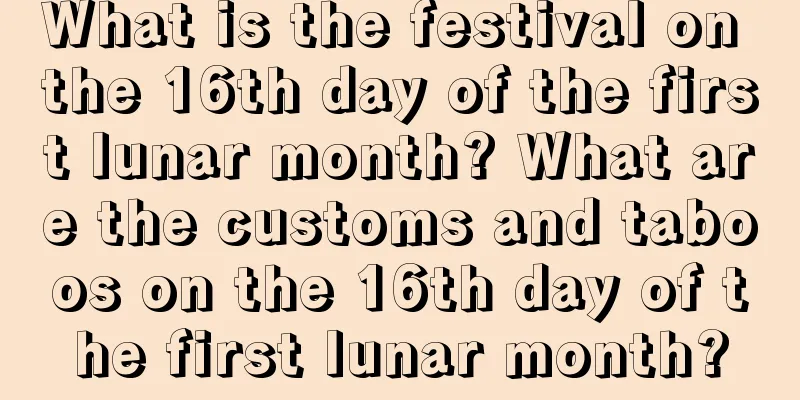What solar terms are there in February of the lunar calendar in 2021? Introduction to Solar Terms

The solar terms in different months of different years are also different. So, let’s take a look at what solar terms are there in February of the lunar calendar in 2021? Introduction to solar terms. If 2021 is a brand new chapter, then the first month of the lunar calendar is the most important title page. To anticipate the highlights, don’t miss the 2021 first month special topic that Shuimoxiansheng.com has carefully prepared for you.What solar terms are there in February of the lunar calendar in 2021? Introduction to Solar TermsThe second month of the lunar calendar in 2021 is from March 13, 2021 to April 11, 2021.The solar terms of the second month of the lunar calendar in 2021 are as follows: Spring Equinox, Qingming 2021 Spring Equinox solar term time: Saturday, March 20, 2021 (8th day of the second month of the Xinchou Year (Year of the Ox)) Qingming Festival time in 2021: Sunday, April 4, 2021 (February 23, Year of the Ox) Introduction to the Spring EquinoxThe Spring Equinox, one of the 24 solar terms, is the fourth solar term in spring. When the Dipper points to Ren, the Sun's ecliptic longitude reaches 0°, and the solar term falls on March 19-22 of the Gregorian calendar every year. The vernal equinox has important significance in astronomy. The day and night are equal in the northern and southern hemispheres. From this day on, the sun's direct position continues to move from the equator to the northern hemisphere, and the days begin to be longer than the nights in various parts of the northern hemisphere. The spring equinox also has obvious climatic characteristics. At this time of year, the weather is warm, there is abundant rainfall and bright sunshine.The Spring Equinox refers to the time when the sun is between 0° and 15° of the ecliptic longitude, that is, the period from the Spring Equinox to the day before Qingming Festival, which is approximately between March 20 and April 5 in the Gregorian calendar. In ancient times, the Spring Equinox was also called "the middle of the day", "the division of day and night", "the moon of mid-spring", and "the rising equinox". The significance of the Spring Equinox is, firstly, that the day and night are equally divided, 12 hours each; secondly, the Spring Equinox is in the three months of spring (from the Beginning of Spring to the Beginning of Summer), dividing the spring season equally. Introduction to Qingming solar termThe Qingming solar term marks the end of the Mao month and the beginning of the Chen month in the Ganzhi calendar. The Ganzhi calendar (Sui Ji Sheti) calculates the months according to the movement of the Big Dipper. The day pointed by the handle of the Big Dipper is called "Dou Jian" (the ancient name for the day pointed by the handle of the Big Dipper is "Jian"). For example, it is recorded in Huainanzi Tianwenxun: "The Emperor stretched out the four directions and moved them with the Dipper. Every month, they moved one star and returned to their original place. The first month pointed to the zodiac sign of Yin and the twelfth month pointed to the Chou sign. This went around once a year and ended and began again." The "Dou" here refers to the handle of the Big Dipper. The handle of the dipper rotates in a circle, and one clockwise rotation is one cycle, which is called a "year" (Sheti). The 24 solar terms and the 12 months are the basic contents of the Ganzhi calendar. The 12 months are the solar term months based on the 24 solar terms. The division of the 12 months is based on the solar terms, namely the Beginning of Spring, Waking of Insects, Pure Brightness, Beginning of Summer, Grain in Ear, Lesser Heat, Beginning of Autumn, White Dew, Cold Dew, Beginning of Winter, Heavy Snow and Lesser Cold, which are respectively the beginning of Yin month (Sheti Ge), Mao month (Dan Yan), Chen month (Zhi Xu), Si month (Da Huang Luo), Wu month (Dun Zhang), Wei month (Xie Qia), Shen month (Qing Tan), You month (Zuo E), Xu month (Yan Mao), Hai month (Da Yuan Xian), Zi month (Kun Dun) and Chou month (Chi Fen Ruo). The first month of spring is when the handle of the dipper returns to the position of Yin in the Chinese zodiac calendar. The first month is the month of Jianzheng. The month when the handle of the Big Dipper returns to the sign of Yin is the first month of spring. The first month is a concept of the twelfth month in the Sui Ji Sheti Lun, and later it evolved to refer to the first month of other calendars. The twelve months are: the first month is Yin, the second month is Mao, the third month is Chen... Qingming is the beginning of the Chen month (March) in the Ganzhi calendar. The arrival of Qingming Festival marks the beginning of late spring. During this season, the weather is clear and the scenery is bright, all things are visible, and the natural world is full of vitality. |
>>: Is it good to get pregnant around the Jingzhe solar term in 2021?
Recommend
Is December 24, 2021, a lucky day for the Little New Year? Can the funeral be held on this day?
The twelfth month of the lunar calendar is the per...
Is it possible to have a caesarean section on the sixth day of the ninth lunar month in 2021? What should I pay attention to before and after a cesarean section?
In September, chrysanthemums bloom proudly in the ...
What is the future fortune of a baby boy born on the ninth day of the fourth lunar month in 2018?
Introduction: The birth of life is full of hope, j...
Is the fate of a baby boy born on the sixth day of the third lunar month in 2019 good?
Is the fate of a baby boy born on the sixth day of...
When is Little New Year in 2022? Is it suitable to move house on the Little New Year’s Day? What should I pay attention to?
Xiaonian is a symbol of the busy year, indicating ...
Is the fate of a female dog born on the sixth day of the third lunar month in 2018 good or bad?
Introduction: A new life is born every day, but ch...
Is the Beginning of Heat in 2017 a good time? Is it okay to renovate the house?
Introduction: In our country, there is a custom th...
Is it okay to pray on the 19th day of the third lunar month in 2020? Is the old almanac good?
Everyone hopes to choose a good time to pray, so l...
Is September 4, 2018 a suitable date for opening a new store?
Want to know your fortune in the ninth month of t...
Is it suitable to repair graves on April 28th of the lunar calendar in 2019? Is today's hexagram a bad hexagram?
Introduction: Generally, it is necessary to choose...
November 8, 2019 is the beginning of winter. A detailed analysis of the overall fortune of people born in the Year of the Snake!
Introduction: Fortunes are always changing with ti...
Interpretation of Feng Shui factors that affect the birth of a boy or girl
Introduction: "Whether to have a boy or a gi...
Query the lunar calendar and the auspicious and unlucky time of April 26, 2017
Introduction: People usually check the almanac to ...
Ancient poems about the beginning of summer
As one of the 24 solar terms in my country, the Be...
Is the second day of the fourth lunar month in 2019 an auspicious day for weddings? Is it a good idea to get married on the beginning of summer?
Introduction: Marriage is one of the major events ...









